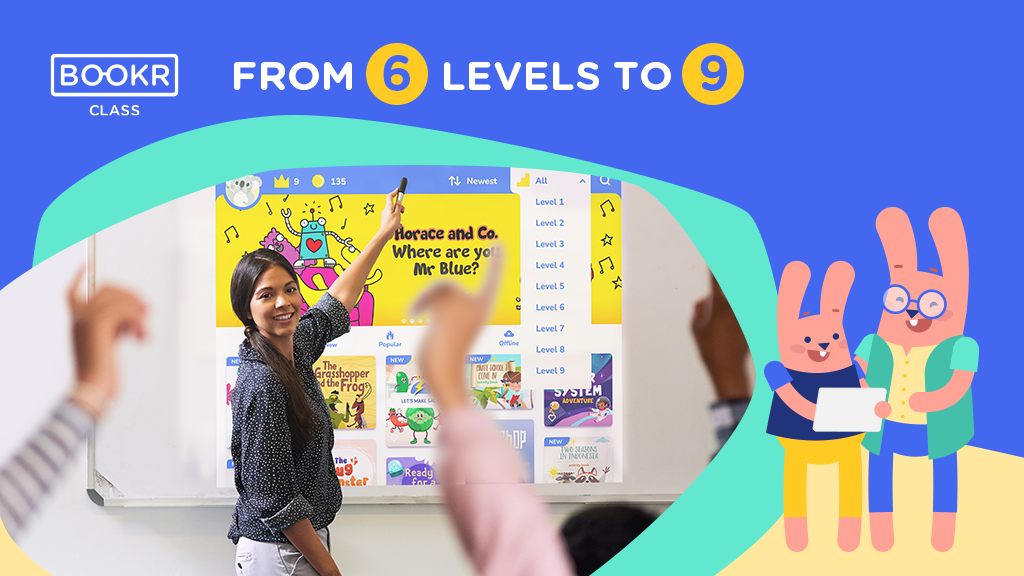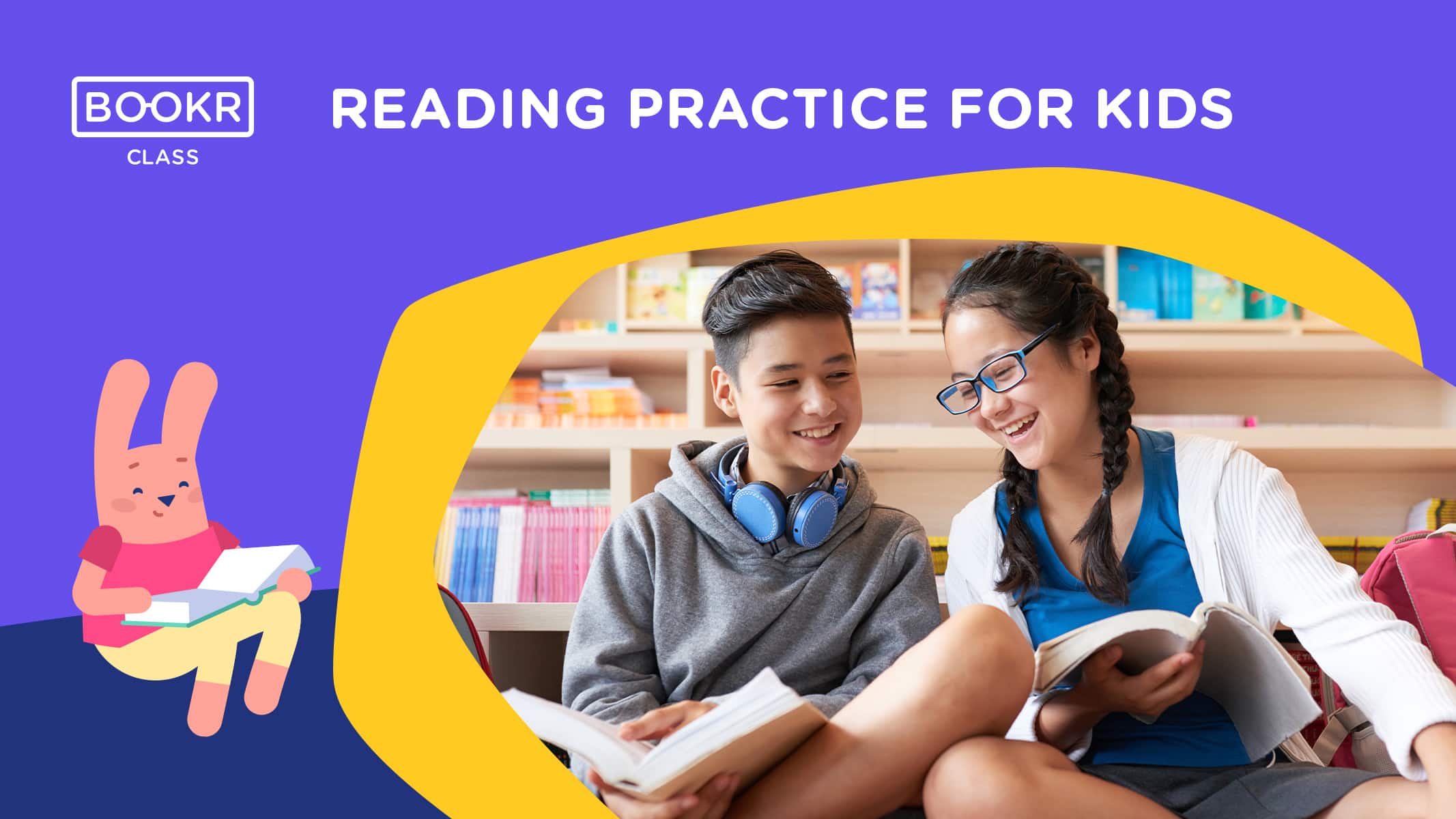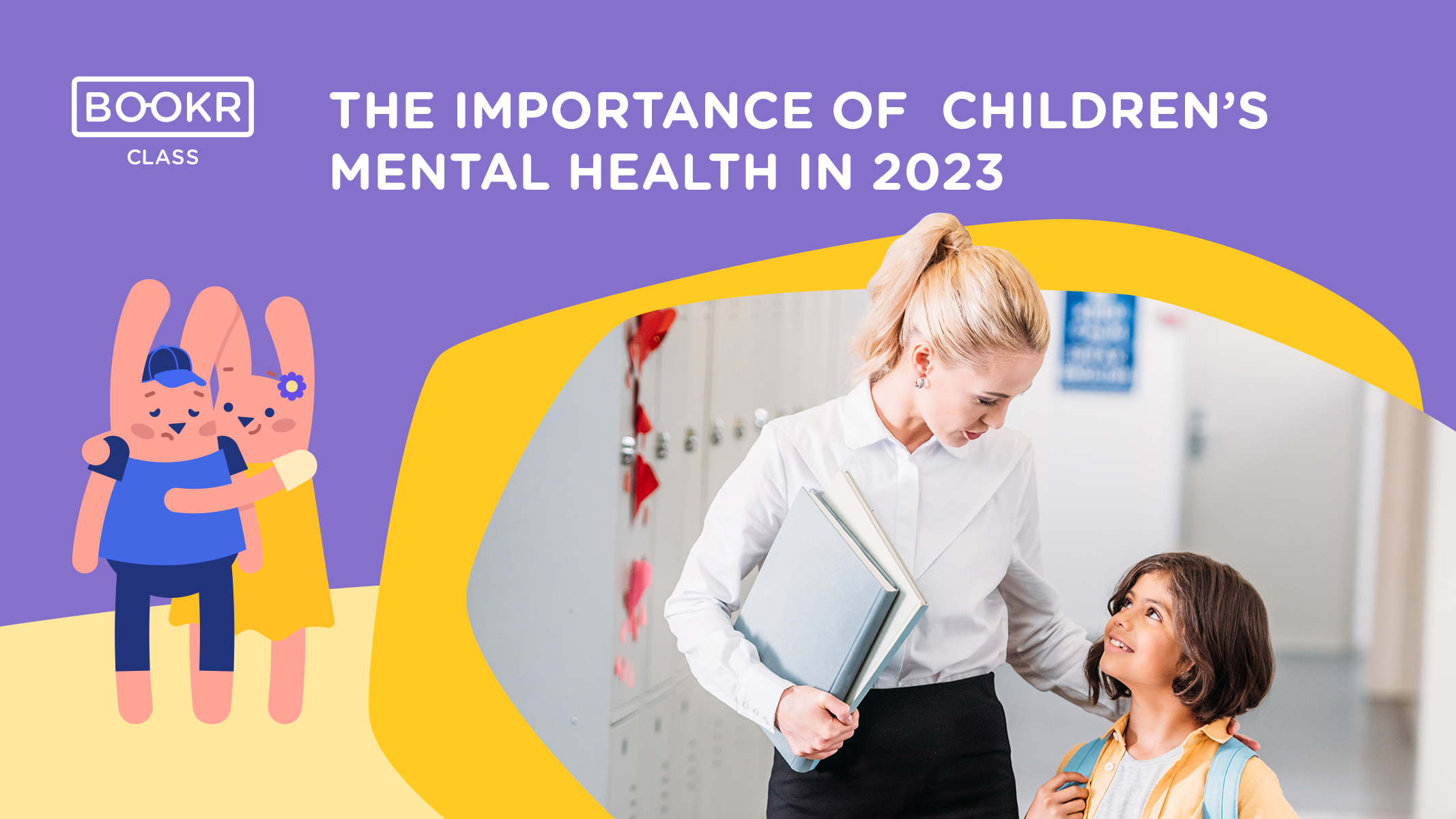Understanding 21st-century Teaching Approaches: The Long Road to Today’s Modern Classrooms
It is needless to say that language teaching has become a booming industry with more and more people sacrificing their time and money to learn a new language, typically for a host of various reasons. Their motivations may range from simply going away on holiday through consuming foreign media to even starting a new life abroad. As a result, language teachers are faced with the constant challenge of catering for various learner needs to help everyone achieve their individual goals.
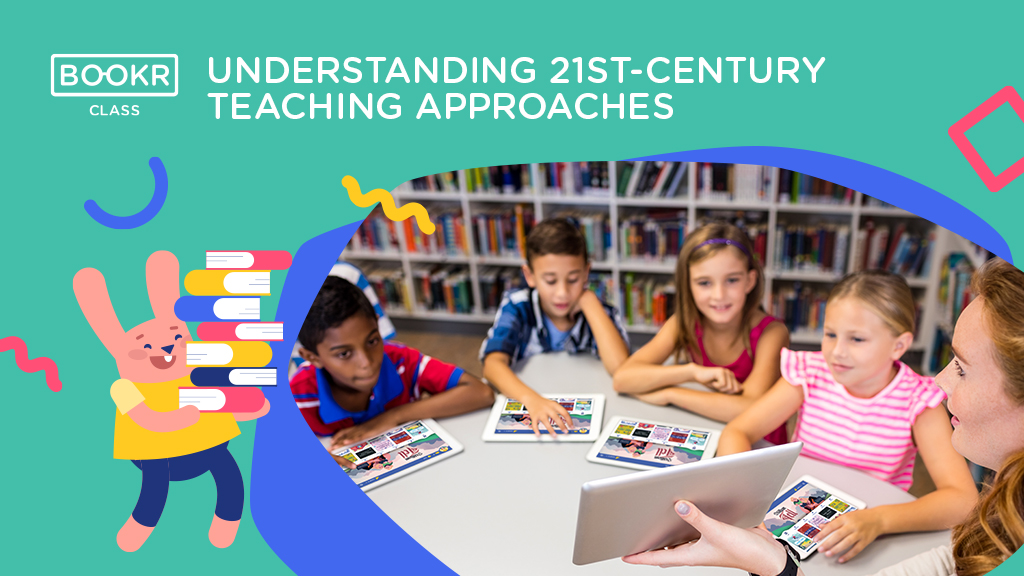
Table of content
The above, however, is a truly 21st-century phenomenon and was not always the case for language teaching. There were times when language skills were not seen as an asset but rather an obstacle to assimilation and conforming to the norms of society. People say, ‘old habits die hard’, and this is why it is crucial for us teachers to keep in mind what changes have shaped today’s language teaching practices. This article will highlight some of the key teaching approaches that have shaped and steered language education in the course it is going today.
The only constant in life is change.
Living in the era of a global pandemic crisis makes this quote truly relatable, yet even prior to that, change would dominate every walk of life. As for language teaching, it is universally accepted that languages (and even learners) change, which may be triggered by different socio-economic as well as geo-political factors, or a shift in priorities, as societies develop.
Looking at the historical underpinnings of language policy, we can say that the evolution of humanity has affected our perception of and attached value to language as a social construct. This evolutionary timeline may be divided into three distinct phases, i.e., premodern, modern, and postmodern (Graddol, 2006), as detailed in the below chart.
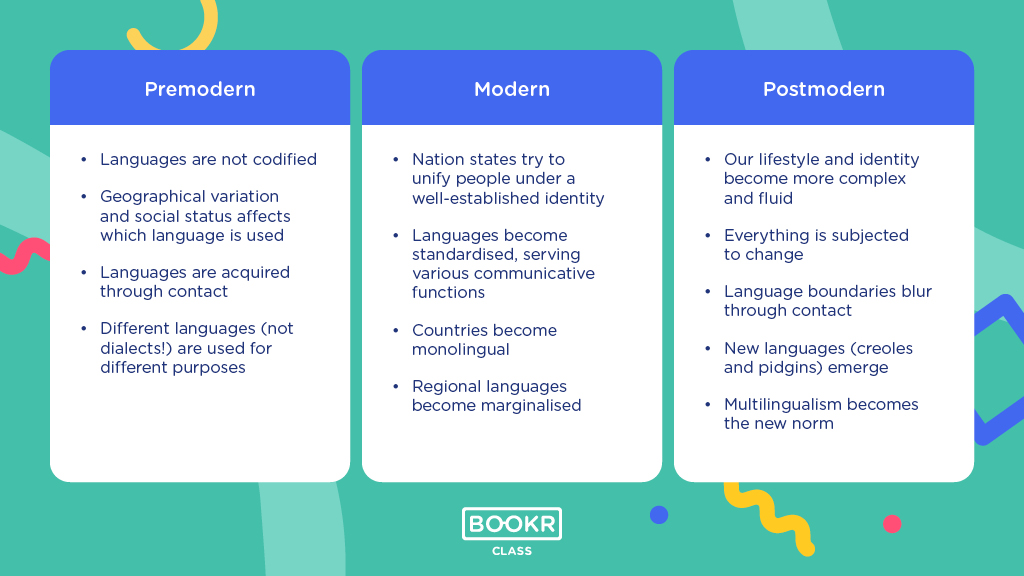
Language learning became institutionalised in ‘linguistic modernity’, yet it also became less incidental and a less natural process. This process accelerated in the 20th century when various language teaching approaches were invented in order to fulfil a certain language-learning purpose. Owing to the fact that paradigms take a long time to shift, ample approaches and views of language govern language teaching, depending on our geographical location and the education system we are a part of.
Different teaching contexts call for different approaches
In the following chart (Table 2), three different contexts have been outlined with regard to the focus of learning and the social embeddedness of English. Some of these principles have had a profound effect on education policy at a(n inter)national level.
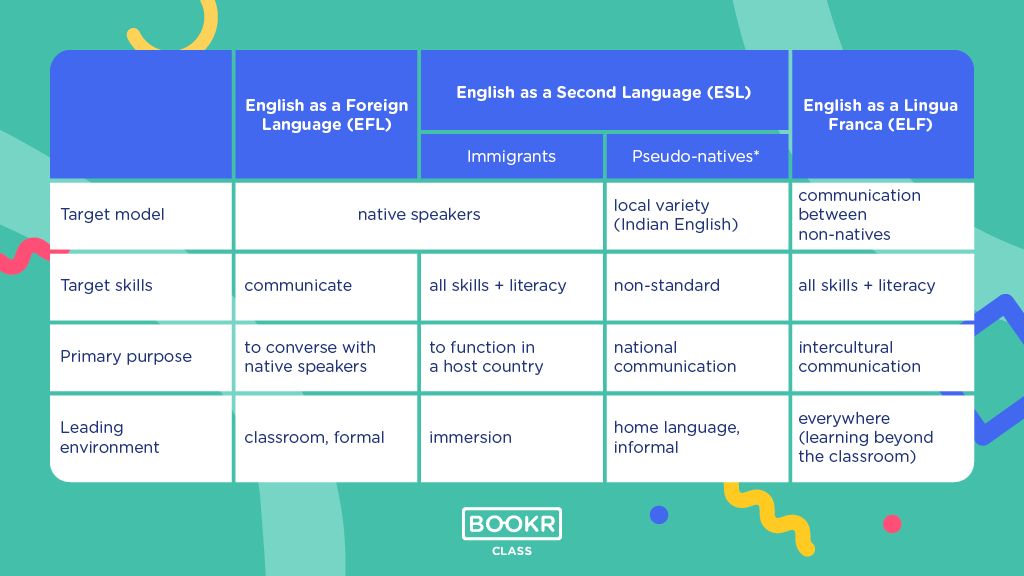
Having emerged back in the 1950s, methodologies based on EFL dominated the English Language Teaching (ELT) industry for a long time. Currently, these older approaches seem to be giving way to a merely new orthodoxy that better corresponds with global trends.
As indicated in the chart, English has become a global language serving as a means to communicate internationally with speakers of other languages. This change has generated a social demand for language teachers to broaden the scope of their courses and overall methodology, allowing learning to go beyond the language itself. Foreign-language communication has become a valuable life skill, and English is being chosen as the second language to learn by many, even as early as kindergarten.
Answering the challenges: CLIL
CLIL, or Content and Language Integrated Learning, has been on the European Union’s agenda for a few decades aiming to promote multilingualism and the development of 21st-century skills (e.g., communication, critical thinking, creative thinking, and collaboration) among its member states. It is undeniably true that these skills and the ability to speak foreign languages will be inevitable for future generations, thus, by drawing on real-life experiences, CLIL seems to be just the right approach to learning.

The methodological foundations of CLIL derive from English-Medium Instruction (EMI) and English for Specific Purposes (ESP) practices, thus allowing for a more holistic approach to teaching.
Right at its inception, CLIL meant a novel approach to foreign-language teaching that is rooted in language immersion and content-based instruction (CBI). What distinguishes CLIL from EMI is the integration of certain mother-tongue and target-language practices that facilitates the emergence of a more dynamic language system, as well as the use of a more extensive and varied vocabulary in the classroom.
Due to its uniqueness, CLIL is really hard to define with clear terms. Probably, the greatest benefit of the approach is meant by its potential to prepare students for real-life (professional) interactions within their chosen fields (of interest), all the while English acts as their chief means of communication.
We must, however, distinguish between particular CLIL types in certain cases according to the aims of the course and the students’ needs. Consequently, the terms ‘hard CLIL’ and ‘soft CLIL’ have been coined, with the former one referring to target-language content classes (e.g., the instruction of biology in bilingual education), while the latter one integrates elements of CLIL (especially the ‘content’ segment) in the foreign-language classroom. Thus, students would have a language lesson on genetics doing various activities (Kelly at al., 2011; Clegg et al., 2015). In summary, we can say that hard CLIL is content-driven as compared to soft CLIL, which appears to be more language-driven.

Regarding the role of the teacher, CLIL teachers, in an ideal situation, are capable of utilising a confident level of English of at least level B2(+), yet in bilingual education, the requirements may be well above that (at levels C1/C2).
The art of lesson planning
As intricate it may seem, lesson planning is actually a really simple process, regardless of the language, subject, or type of lesson (e.g., EFL, or CLIL). Below, you can read a few – more or less universal – statements to bear in mind when designing lessons of any kind:
In reality, the ‘art’ of lesson planning becomes a really simple procedure once you get acquainted with your teaching context and the needs of the learners you are working with.
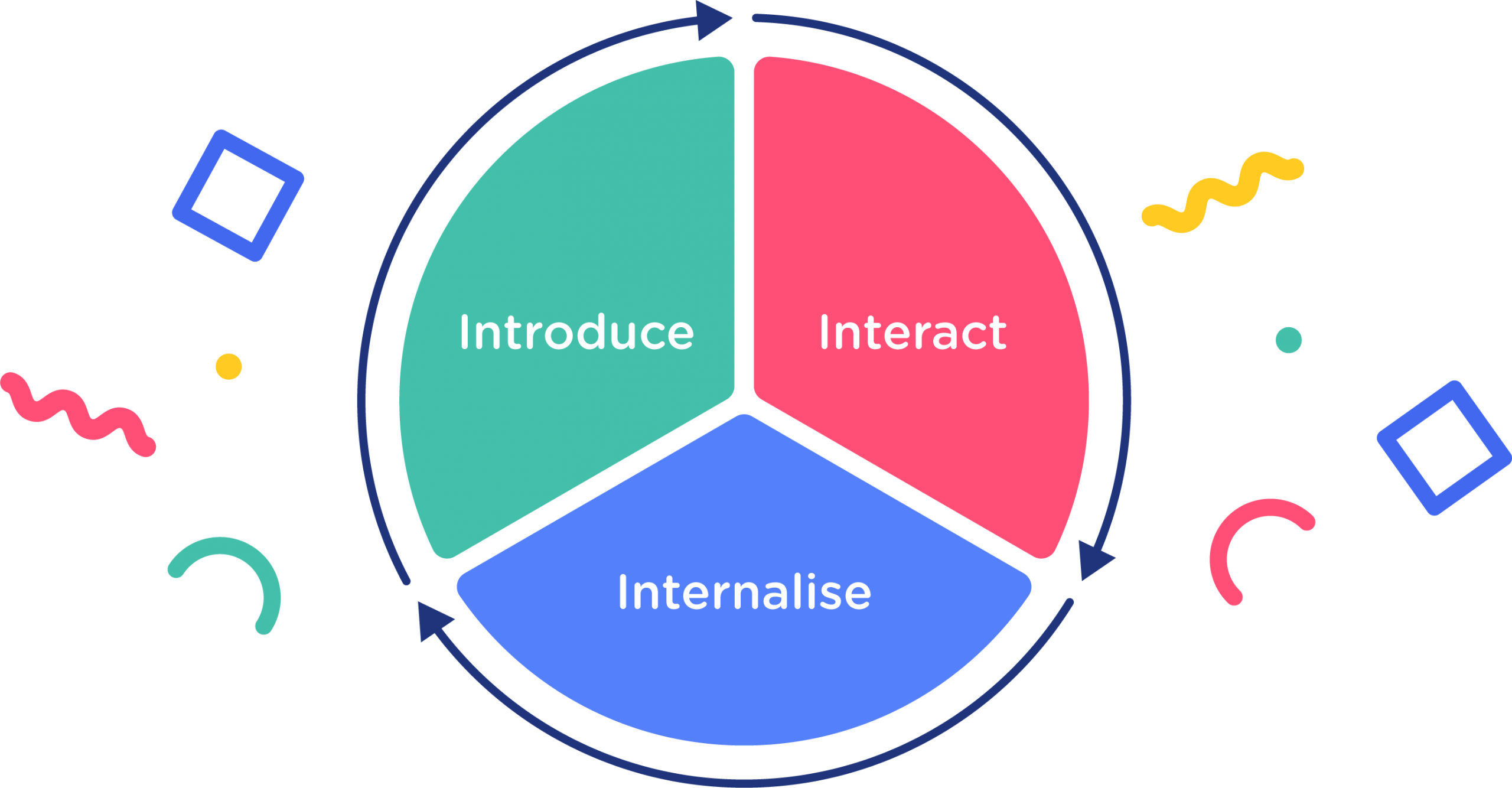
From a language point of view, lessons can easily be broken down into three key phases. In the ‘Introduction’ part, teachers draw on students’ previous knowledge regarding the problem in question (i.e., a speaking topic, a new grammatical structure, recently learnt vocabulary items, etc.). In other words, this is the stage where you activate schemata.
What makes this approach a tad different from the well-established PPP (present-practice-produce) pattern is that students become the centre of attention right at the beginning of the class, as well as active participants in the learning process. In the PPP framework, production (thus activation) typically happens at the end of the lesson.
The next two steps involve practice: ideally, in the second (‘Interaction’) phase, students target (or ‘drill’) the new content directly through activities. (It is imperative that your learners not only interact with the language through various exercises but also with each other. As language itself is a social construct, it all comes down to how they use it to communicate with their peers, or even the teacher! This is also what most PPP-based classes lack.)
What follows in the final (‘Internalisation’) segment is the facilitation of free practice so that students can have a contextualised (CLIL) experience working with what they have learnt. This way, their brains will start to create synapses more easily and new information gets retained quicker and in the long run.
To illustrate the above with an example, let us take a look at how the past form of modal verbs could be taught within this framework in an English class:
give students some problem statements and try to elicit modal verbs by asking them to give advice, suggestions, or establish rules. Then, write some of the examples on the board.
As a class, discuss what these verbs mean and what purpose they serve. Once you have done this, write examples of sentences with past modals and elicit how we can put the modal verbs into the past (by adding the verb ‘have’ and the past participle [V3] form of the main verb).

hand your students some drill exercises (requiring either writing or speaking) to complete in pairs for more focused practice.

contextualise this new grammar by playing Agony Aunt (based on the famous newspaper column), where students are given a problem (i.e., letters to the columnist) to which they need to find solutions, offer suggestions, or explain what they could/would have done differently if they were the reader.

Contextualising learning is inevitable for your students to see language ‘in action’. CLIL is an approach that can easily lead to the emergence of meaningful, lifelike communication in the classroom. As for the formerly mentioned Introduce-Interact-Internalise framework, it can be stated that it is flexible enough to come in handy in all sorts of language-learning situations.
What makes a ‘(post)modern’ classroom?
In our rapidly changing world, it almost feels as if we were expected to maximise the efficiency and effectiveness of our lessons. In order to do so, I can recommend you two strategies to implement:
you may find flipped classrooms beneficial to save time for in-class discussions.
This approach allows your learners to come prepared for class, thus the ‘traditional’ classroom work will take place at home with the help of well-curated materials for self-study before the lesson itself. As a result, when you next meet your group, you will be able to focus on questions or problems, as well as begin by doing focused or freer practice right away!
Flipped classrooms have been criticised for increased teacher preparation time and for not offering viable solutions as to what happens when a student, out of negligence, does not prepare for the next lesson.
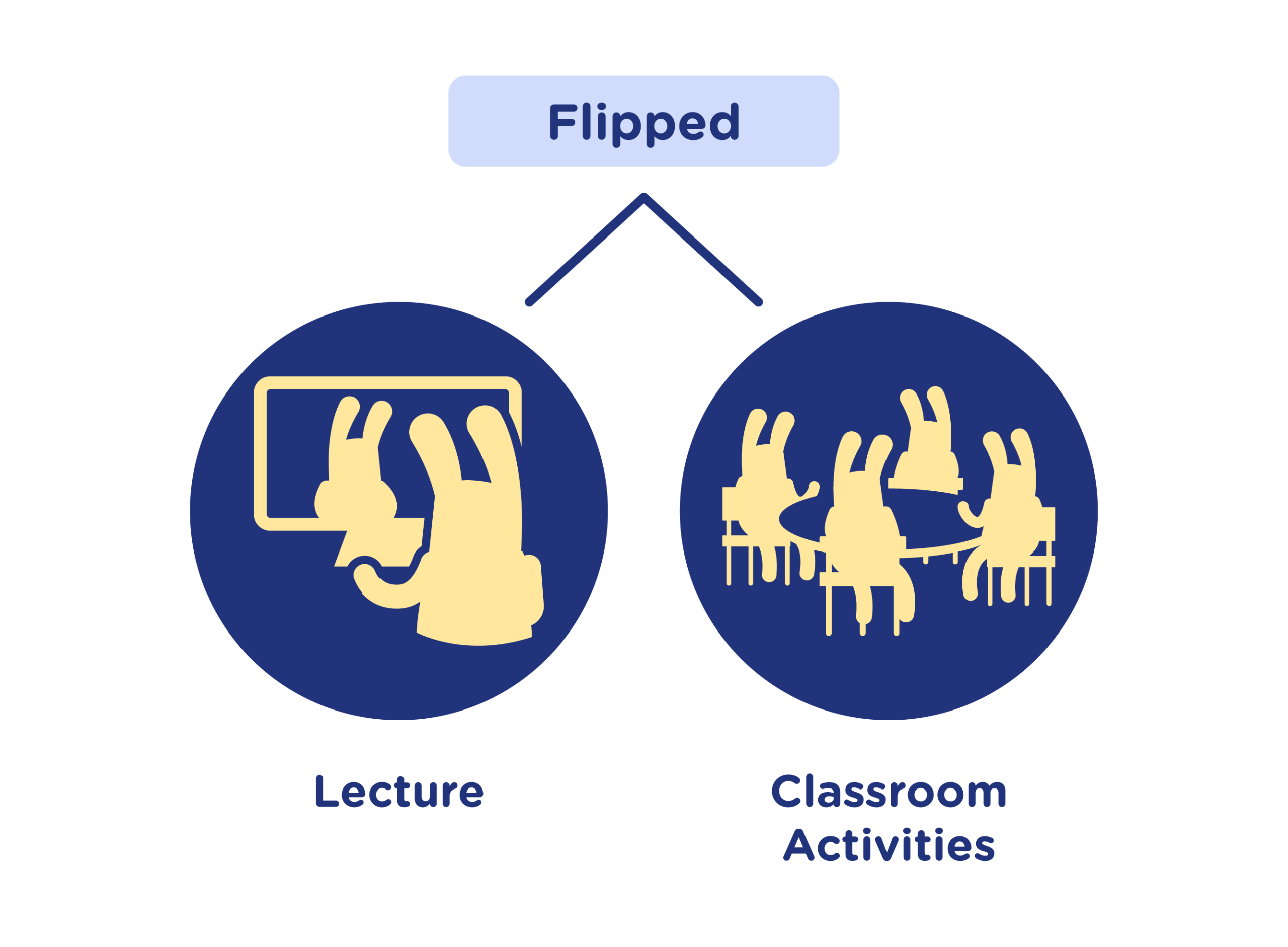
This is why it may require caution when and how to flip your classes, as well as what exact tasks should be set for self-study at home to benefit the next session with your group (Hertz, 2021). Consequently, making at-home learning interactive is crucial, and this is where applications like BOOKR Class may come in handy.
After assigning a book to your students, the application and its teacher dashboard will allow you to track their individual progress and anticipate possible challenges they may have faced while reading at home. When you next meet in class, you can start by discussing some problem areas based on your observations.
in contrast to PPP, TBL hinges on meaning-focused communication starting right at the beginning of your lesson (as opposed to the final minutes of it).
Based on how effective the initial communication is, you can later decide what to dedicate your class to. Thus, instead of structure, the emphasis will fall on meaningful communication, drawing on the exact communicative needs of your learners.
In other words, doing TBL will allow you to continuously analyse and respond to your students’ demands by altering the content of your lessons (Anderson, 2021). Although the approach sounds really comforting, it also requires an open-minded and flexible teacher personality that can allow learners (re)write the class.
A task can be as simple as a paired activity where students discuss and agree on something, e.g., In pairs, look at the list of 10 possible birthday presents and agree on the TOP 5. You may wish to add further examples on your own. The essence is in meaningful communication.

Wrapping it all up
Instead of repeating what has already been said, I encourage you to reflect on the article by answering the following questions and engaging with the issues raised more actively. I hope you will find the presented strategies and the below reflection questions useful for your professional development.

